Whether it was before and during the NBA draft or throughout the league's free agency period, the trades have been rolling in across the association.
The Denver Nuggets, already busy winning an NBA title, kicked things off by swinging a deal with the Oklahoma City Thunder.
Then the Phoenix Suns traded Chris Paul, Landry Shamet and multiple second-round picks and pick swaps for Washington Wizards guard Bradley Beal, creating a new big three in Phoenix with Devin Booker and Kevin Durant.
The Boston Celtics landed big man Kristaps Porzingis from the Washington Wizards in a three-team deal that also sent former Defensive Player of the Year Marcus Smart to the Memphis Grizzlies.
Then just hours before the draft, CP3 was on the move yet again, this time finding a home with the Golden State Warriors.
What other moves are in store throughout this offseason? ESPN NBA Insider Kevin Pelton is grading all the biggest trades.
Jump to a deal: CP3 to Warriors | Beal to Suns | Porzingis to Celtics

LATEST DEALS
July 5: Grant Williams heads to Mavs via sign-and-trade
Dallas Mavericks get:
F Grant Williams (via sign-and-trade),
Two second-round picks (via San Antonio)
Boston Celtics get:
Two second-round picks (via Dallas)
San Antonio Spurs get:
G Reggie Bullock, 2030 swap rights (via Dallas)
Dallas: B-
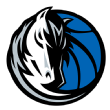 Acquiring Williams via sign-and-trade conveys a pair of important benefits for the Mavericks. Not only do they avoid a scenario where Boston matched an offer sheet to Williams, making the deal preserves Dallas' access to the non-taxpayer midlevel exception. Sources told ESPN's Tim MacMahon the Mavericks have interest in signing Portland Trail Blazers wing Matisse Thybulle, also a restricted free agent, to an offer sheet.
Acquiring Williams via sign-and-trade conveys a pair of important benefits for the Mavericks. Not only do they avoid a scenario where Boston matched an offer sheet to Williams, making the deal preserves Dallas' access to the non-taxpayer midlevel exception. Sources told ESPN's Tim MacMahon the Mavericks have interest in signing Portland Trail Blazers wing Matisse Thybulle, also a restricted free agent, to an offer sheet.
A strong start to Dallas' offseason saw the team add the No. 24 pick and shed salary by effectively swapping Davis Bertans for Richaun Holmes on draft night. The Mavericks followed that up by getting unrestricted free agents Kyrie Irving and Dwight Powell back while adding Seth Curry on a deal that can fit into their biannual exception.
Those moves, including drafting Duke's Dereck Lively II at No. 12, addressed Dallas' center position and added needed shooting. They didn't do anything to upgrade a Mavericks defense that ranked 25th on a per-possession basis last season and was even worse after Dallas sent top perimeter defender Dorian Finney-Smith to the Brooklyn Nets in the deal for Irving.
Adding Williams, and potentially Thybulle, will upgrade the Mavericks' leaky defense. Having averaged 27.3 MPG during Boston's run to the 2022 NBA Finals, Williams has proven his defensive bona fides at the highest levels. Last season saw him spend more time at small forward as part of a deep Celtics frontcourt, adding to his defensive versatility.
I particularly like Williams' fit alongside either Thybulle or Josh Green, two below-average shooters for wings. At times, Dallas coach Jason Kidd can essentially invert his forwards on offense, with Williams playing more of the classic wing role spacing on the perimeter (he's a career 38% 3-point shooter who's boosted that to 43% in the playoffs) while Green and Thybulle spend more time cutting and even screening at times for Irving and Luka Doncic in pick-and-rolls.
The value on Williams' contract also seems strong. The Mavericks got him for a deal equivalent to the full non-taxpayer midlevel, less than comparable two-way role players Bruce Brown Jr. ($22.5 million on a short-term deal that only guarantees him one year) and Max Strus (four years, $63 million) got. A four-year deal takes Williams through age 28, meaning Dallas has signed up his best NBA years.
Those benefits came at a cost, and in this case it's what the Mavericks had to pay to offload Bullock's salary to San Antonio: an unprotected draft swap in 2030. Given No. 1 overall pick Victor Wembanyama will be 26 in 2029-30, and would be three years into a potential rookie extension, the Spurs might have the single brightest outlook of any NBA team that far out.
There's still a strong chance the swap ends up close to meaningless. This far away, it's impossible to predict where any team will be with certainty. That same factor means there's massive downside to giving away an unprotected swap, particularly for a team that's already likely out two first-round picks in the minimum. (Dallas owes New York a top-10 protected pick through 2025 and an unprotected first-rounder to Brooklyn in 2029.)
Since the Mavericks have urgency to build the best team possible now to encourage Doncic to stick around long-term, I'd still do this deal. Particularly if Dallas can also land Thybulle, the roster will look much improved heading into 2023-24. Still, giving up an unprotected swap well after Doncic's contract is up would make me queasy.
Boston: C-
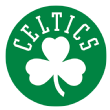 If the Celtics were unwilling to match an offer sheet to Williams at this salary, completing a sign-and-trade is obviously a win. Not only does Boston collect a pair of second-round picks, the team also creates a $6.2 million trade exception that will be its best chance of adding salary via trade with the taxpayer midlevel almost certainly off limits due to the second apron in the new NBA collective bargaining agreement.
If the Celtics were unwilling to match an offer sheet to Williams at this salary, completing a sign-and-trade is obviously a win. Not only does Boston collect a pair of second-round picks, the team also creates a $6.2 million trade exception that will be its best chance of adding salary via trade with the taxpayer midlevel almost certainly off limits due to the second apron in the new NBA collective bargaining agreement.
Whether the Celtics should have simply matched and kept Williams is a more challenging question. Left unsaid beforehand was how Williams fell out of favor in new head coach Joe Mazzulla's rotation over the course of 2022-23, collecting a handful of DNP-CDs during the playoffs.
With Boston also adding Kristaps Porzingis to the frontcourt mix earlier this summer, Williams became more of a luxury for a team that would have pushed more than $20 million over the tax line by matching this offer. Justifying that kind of expense on a fourth big man is challenging.
At the same time, Williams is a quality role player in his mid-20s on a team with aspirations of contending throughout the prime of stars Jaylen Brown and Jayson Tatum. Letting him get away on a reasonable contract could hurt when Al Horford ages out of the rotation or retires.
Ultimately, I would have kept Williams. That's much easier to say, however, given it's not my money to spend.
San Antonio: A
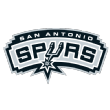 As other teams used up their cap space in free agency, taking on salary with less upside or via renegotiation and extension, the Spurs bided their time and waited for the market to come to them as the last team left with major ability to take on a bad contract. That paid off with this deal.
As other teams used up their cap space in free agency, taking on salary with less upside or via renegotiation and extension, the Spurs bided their time and waited for the market to come to them as the last team left with major ability to take on a bad contract. That paid off with this deal.
Depending how San Antonio plans to use Bullock, his $10.5 million salary isn't even that bad for a player who started 55 of his 78 games and averaged 30.3 MPG last season. If the Spurs decided to hang on to Bullock, it's reasonable to think they could flip him for value before the deadline.
More likely, San Antonio will stick with a wing rotation already crowded with developing young talent. That could translate into a buyout for Bullock, who would instantly become one of the more intriguing minimum-salary free agent options on the market.
There's a long time between 2023 and 2030 and Wembanyama's development remains a mystery. Those caveats noted, it's entirely possible that we could end up seeing the Spurs swap up from the bottom of the first round thanks to this deal.

July 1: Rockets trade K.J. Martin for future picks
LA Clippers get:
F K.J. Martin
Houston Rockets get:
Two second-round picks
LA Clippers: A
 Much like acquiring Bones Hyland at the trade deadline, this looks like a low-cost investment in adding young talent to an aging Clippers roster. As compared to the Clippers filling things out by signing a player at the veterans minimum, Martin will actually count less in the final season of the minimum-salary contract he signed with the Rockets as a second-round pick in 2020 before becoming an unrestricted free agent next summer at age 23.
Much like acquiring Bones Hyland at the trade deadline, this looks like a low-cost investment in adding young talent to an aging Clippers roster. As compared to the Clippers filling things out by signing a player at the veterans minimum, Martin will actually count less in the final season of the minimum-salary contract he signed with the Rockets as a second-round pick in 2020 before becoming an unrestricted free agent next summer at age 23.
In Houston, Martin played an interchangeable forward role. It will be interesting to see whether the Clippers try to use him as the undersized backup center they could never settle on last season. Martin has proved capable of blocking shots at times early in his career -- last season's 0.5 blocks per 36 minutes were barely a third of what he averaged as a rookie -- and playing center minimizes the impact of his iffy 3-point shooting (34% career).
Alternatively, Martin could play his way into the mix to start at power forward. Whatever position Martin plays, he provides needed physicality for a Clippers roster short on it. Per Basketball-Reference.com, Martin had 173 dunks last season while playing all 82 games -- itself no small feat on the Clippers. Starting center Ivica Zubac, with 130, was the only Clippers player with more than 50 dunks for the team.
If things work out, Martin's contract will be considerably more expensive next summer, providing the Clippers can retain him without matching rights. They will have full Bird rights to re-sign Martin for any amount, and that's a decision for well down the road.
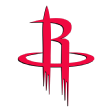 Houston: C-
Houston: C-
From the outside, I don't quite understand the urgency to move Martin on the opening day of free agency for what seems like relatively paltry return. The Rockets didn't even get the most attractive second-round picks the Clippers have to offer, taking a pick in 2026 and the Memphis Grizzlies' 2027 second-rounder, per Andrew Greif of the Los Angeles Times. I would have preferred 2024 second-round picks the Clippers have coming from the Indiana Pacers (pending a swap that favors the Clippers) and Toronto Raptors.
Perhaps once the full financial picture of Houston's series of trades on Saturday comes together, the need to include Martin will be clear. More likely, the Rockets worried about his happiness in a reserve role. With almost three months left until training camp, that didn't necessarily need to translate into a trade now.

July 1: Knicks send Toppin to Indiana for second-rounders
Indiana Pacers get:
F Obi Toppin
New York Knicks get:
Two second-round picks
Trade exception
Pacers: A
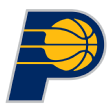 As a pure talent play, I like this move for the Pacers, who will utilize their remaining cap space to take on Toppin's $6.8 million salary after Bruce Brown Jr. agreed to the contract reported on Friday.
As a pure talent play, I like this move for the Pacers, who will utilize their remaining cap space to take on Toppin's $6.8 million salary after Bruce Brown Jr. agreed to the contract reported on Friday.
Now age 25, Toppin is unlikely to develop into the kind of NBA star he was at Dayton before being drafted No. 9 overall by New York in 2020. Still, all indications are he has more to offer than what we've seen with the Knicks.
When New York drafted Toppin, Julius Randle was coming off an underwhelming first season at Madison Square Garden, making power forward look like a long-term need. Randle responded with an All-NBA campaign in 2020-21. Add in Tom Thibodeau's unwillingness to play both players in small frontcourts and that has left Toppin as strictly a backup power forward, averaging 15.7 MPG last season.
Additionally, New York has never paired Toppin with a credible stretch 5, limiting his pick-and-roll opportunities. According to Second Spectrum tracking, Toppin's rate of on-ball screens has declined each season of his career from 32.2 per 100 possessions as a rookie to 21.0 in 2021-22 and just 8.8 last season.
Expect that rate to jump in Indiana, where Toppin is a candidate to start at power forward alongside Myles Turner -- the kind of stretch big who can open things up for him as an above-the-rim pick-and-roll finisher. At the other end of the court, Turner's rim protection helps compensate for Toppin's below-average defense, making that an ideal fit if Toppin can beat out No. 8 pick Jarace Walker to start.
It would certainly help Toppin's value if he continues his development as a shooter. Largely a non-threat during his first two seasons, when he shot 31% on 4.8 3-point attempts per 36 minutes, Toppin boosted that to 8.5 attempts and 34% accuracy last season.
Down the road, the Pacers have nothing committed to Toppin after this season, allowing them to walk away if the fit doesn't work. Alternatively, they could look to extend Toppin before the start of the season and would have restricted rights on him next summer if not.
Knicks: B+
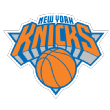 With the Knicks using their non-taxpayer midlevel exception to sign Donte DiVincenzo, this looks like a case of downsizing the team's second unit. We saw the combination of RJ Barrett and Josh Hart serve as backup power forwards in the playoffs when Randle was sidelined (take your pick which plays the 3 and which the 4 when on the court together), and utilizing them there opens up more playing time for DiVincenzo on the perimeter and allows New York to put more shooting on the court.
With the Knicks using their non-taxpayer midlevel exception to sign Donte DiVincenzo, this looks like a case of downsizing the team's second unit. We saw the combination of RJ Barrett and Josh Hart serve as backup power forwards in the playoffs when Randle was sidelined (take your pick which plays the 3 and which the 4 when on the court together), and utilizing them there opens up more playing time for DiVincenzo on the perimeter and allows New York to put more shooting on the court.
Using the non-tax midlevel also hard-capped the Knicks at the $172 million lower apron. That wouldn't be an issue except that New York has multiple players with unlikely incentives in their contracts (Barrett, Evan Fournier, Isaiah Hartenstein and Randle) and all those incentives count toward the hard cap. Therefore, somebody had to go, with Toppin the most expendable player for value.
That said, if Randle misses an extended period of time after being incredibly durable in recent years, the Knicks as presently constructed start to get small in a hurry. They can't really use centers Hartenstein and Mitchell Robinson together for extended minutes, and the fit at power forward is little better for third-stringer Jericho Sims.
With about $6.6 million wiggle room under the tax apron, per ESPN's Bobby Marks, New York could either sign a replacement power forward using the $4.5 million biannual exception or acquire a player using the $6.8 million trade exception the Toppin trade generates.

July 1: Cavs swing sign-and-trade for Strus
Cleveland Cavaliers get:
F Max Strus
Miami Heat get:
Trade exception
Future second-round pick
San Antonio Spurs get:
F Cedi Osman
F Lamar Stevens
Future second-round pick
Cavaliers: A-
 After making the Donovan Mitchell trade last September, long after the dust settled on free agency, this summer was the Cavaliers' first opportunity to find the 3-and-D wing they'd needed next to Mitchell. With plenty of room to spend up to the luxury tax, striking a sign-and-trade deal for Strus allowed Cleveland to maximize its spending power and make him an offer substantially above the non-taxpayer midlevel exception.
After making the Donovan Mitchell trade last September, long after the dust settled on free agency, this summer was the Cavaliers' first opportunity to find the 3-and-D wing they'd needed next to Mitchell. With plenty of room to spend up to the luxury tax, striking a sign-and-trade deal for Strus allowed Cleveland to maximize its spending power and make him an offer substantially above the non-taxpayer midlevel exception.
As a fit in that role, the 6-foot-5 Strus isn't quite ideal. The Cavaliers would surely have preferred a slightly bigger wing more capable of matching up with the kinds of small forwards they could face in the Eastern Conference playoffs, including Jayson Tatum and Strus' former teammate Jimmy Butler.
Looking around the market, however, the players who fit that criteria were much weaker shooters who would have done little to help the poor floor spacing that doomed Cleveland in a first-round loss to the New York Knicks.
Strus and Bruce Brown, who ended up landing a shorter deal with a much higher per-year salary from the Indiana Pacers (two years, $45 million, with a team option on the second season), were the most complete options among players who have actually changed teams.
Despite Strus' down season from beyond the arc (35% during the regular season, 32% in Miami's run to the NBA Finals), he's still a massive upgrade in terms of shooting volume. Strus still attempted 8.9 3-pointers per 36 minutes during the regular season and 7.5 in the playoffs. No Cavaliers rotation player save Mitchell (9.4) attempted more than 7.3 during the regular season.
The odds are that Strus, a 37% career 3-point shooter, will see his 3-point percentage bounce back this season. Even if not, teams still felt compelled to guard Strus like a dangerous shooter during the 2023 playoffs because of his ability to get hot in a hurry -- most notably with six 3s in the first half of the Heat's must-win play-in tournament game against the Chicago Bulls.
At 27, Strus also fits a Cleveland timetable that's been accelerated by the arrival of Mitchell (who will turn 27 in September). This isn't a band-aid solution but a long-term option for the Cavaliers on a contract that won't be unreasonable if the younger Isaac Okoro (still just 22) develops as a shooter and ultimately supplants Strus as a starter.
In negotiating a sign-and-trade deal, Cleveland benefited from the fact that the team's outgoing salary wasn't so bad. The Cavaliers made the decision earlier this week to guarantee Osman's modest $6.7 million salary, while Stevens' $1.9 million minimum salary was non-guaranteed. In order to facilitate the reported Strus contract under the new NBA collective bargaining agreement, about one-fifth of that will have to be guaranteed.
As a result, Cleveland was able to pull this deal off sending out only second-round picks in return. That not only allowed the Cavaliers to offer Strus more money but also to retain their midlevel exception, which they'll use to sign Georges Niang to join their second unit.
Heat: A
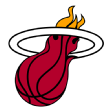 Once the Heat made the decision not to match this kind of offer to Strus, facilitating a sign-and-trade was a no-brainer. It will yield Miami a trade exception worth a little more than $7 million and a second-round pick.
Once the Heat made the decision not to match this kind of offer to Strus, facilitating a sign-and-trade was a no-brainer. It will yield Miami a trade exception worth a little more than $7 million and a second-round pick.
The decision to move on from Strus will have longer-lasting implications. In the past, the Heat have been burned by overvaluing their own players in free agency. They locked into a limited core in the summer of 2017, matching a backloaded offer sheet to Tyler Johnson and re-signing James Johnson and Hassan Whiteside after breakthrough seasons. It took two years for Miami to work out of the resulting cap carnage and resume contending.
More recently, the Heat probably feel burned by rewarding Duncan Robinson with a five-year, $90 million deal in the 2021 offseason. Robinson subsequently lost his starting job to Strus and played just 16.5 minutes per game last season.
This time around, Miami appears inclined to try to develop in-house replacements just like they found and developed Robinson and Strus. Haywood Highsmith is in line for a larger role after contributing at times in the 2023 Finals run, while Jamal Cain is next up after impressing in his limited action on a two-way contract as a rookie. We'll see whether either of them, or someone else, can match Strus' success.
Spurs: B
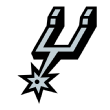 Given their luxury-tax situation, the Heat weren't interested in taking back even reasonable salary from Cleveland, meaning they needed a third team to complete this sign-and-trade. Enter the Spurs, who have ample cap space they don't seem likely to use in free agency and got a second-round pick for their trouble.
Given their luxury-tax situation, the Heat weren't interested in taking back even reasonable salary from Cleveland, meaning they needed a third team to complete this sign-and-trade. Enter the Spurs, who have ample cap space they don't seem likely to use in free agency and got a second-round pick for their trouble.
Osman had his most efficient season as a scorer in 2022-23, making 56% of his 2s and 37% of his 3s. At $6.7 million, he's fairly paid at worst for a rotation contributor. It wouldn't be surprising if San Antonio eventually got something of value to move Osman for another expiring contract at the deadline.
The Spurs can also take a free look at Stevens, who regressed last season after two promising years of bench contributions. The scarce resource in San Antonio right now is roster spots rather than cap space. Including the reported re-signings of Julian Champagnie and Tre Jones, the Spurs have 15 players under contract with more than $20 million in cap space left to spend. That could make Stevens one of the odd men out.

June 30: Wizards' deals continue
Detroit Pistons get:
G Monte Morris
Washington Wizards get:
Second-round pick
Trade exception
Pistons: A
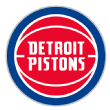 After using the bulk of their cap space in Friday's first deal taking Joe Harris off the Brooklyn Nets' books, the Pistons will use the remainder to take Morris into space while sending out a second-round pick. (To create the necessary room, barring a more significant move, Detroit will have to waive forward Eugene Omoruyi and his non-guaranteed salary.)
After using the bulk of their cap space in Friday's first deal taking Joe Harris off the Brooklyn Nets' books, the Pistons will use the remainder to take Morris into space while sending out a second-round pick. (To create the necessary room, barring a more significant move, Detroit will have to waive forward Eugene Omoruyi and his non-guaranteed salary.)
This is a return home for Morris, a native of nearby Flint, Michigan. It also gives the Pistons perhaps the league's best pair of backup guards, assuming they continue to start Cade Cunningham and Jaden Ivey in the backcourt rather than shifting Cunningham to the wing. Morris was an overqualified backup point guard with the Denver Nuggets before starting the last two years, while Alec Burks has long been a top-tier reserve.
Add in Harris, who figures as the backup to Bojan Bogdanovic at small forward, and a plan is evident for Detroit to contend for a playoff spot this year without sacrificing flexibility for the summer of 2024. Burks, Harris and Morris are all in the last year of their contracts, while Bogdanovic has just $2 million of his 2024-25 salary guaranteed.
Replacing 2020 lottery pick Killian Hayes with Morris will be an important upgrade as the Pistons try to reach the play-in tournament. Yes, Hayes made strides in his third season, boosting both his assist and usage rates. Nonetheless, his .455 true shooting percentage was still 20 points worse than the next-lowest player who saw at least 1,000 minutes of action (Dennis Smith Jr. at .475).
As much as we understandably focus on adding stars, for teams at the lottery end of the standings, going from below-replacement play to merely average can be nearly as significant an improvement. And Morris, if stretched a bit as a starter, is certainly a league-average player or better.
A steady hand at the point, Morris had more than five times as many assists as turnovers last season while making 48% of his 3s. Thanks to that skill set, Morris should be capable of pairing with any of Detroit's other guards.
If the Pistons want to move Morris at the deadline, they could realistically do better than this return. So there's very little downside to this move and considerable upside if Morris plays well.
Wizards: C
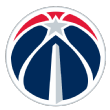 The Wizards' depth chart was overflowing at point guard, where they've added Tyus Jones to incumbent backup Delon Wright and also have Jordan Poole capable of serving as a lead ball handler. Something had to give before training camp.
The Wizards' depth chart was overflowing at point guard, where they've added Tyus Jones to incumbent backup Delon Wright and also have Jordan Poole capable of serving as a lead ball handler. Something had to give before training camp.
It's possible Washington could have gotten more value for Morris by dragging out negotiations, but sending him into cap space allows the team to create a $9.8 million trade exception that could prove useful down the road. This deal also sends Morris to what is presumably a desired landing spot rather than forcing him to fight for minutes with multiple similar players.

June 30: Nets deal Harris to Pistons, acquire trade exception
Brooklyn Nets get:
Trade exception
Detroit Pistons get:
F Joe Harris
2027 second-round pick (via Dallas)
2029 second-round pick (via Milwaukee)
Nets: A-
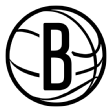 As strong as the Nets' return for Kevin Durant and Kyrie Irving at the 2023 trade deadline was -- and those deals look better by the day, with the first-round picks and swaps the Phoenix Suns sent now showing far more upside after Phoenix's future-mortgaging Bradley Beal trade -- taking back few expiring contracts in return left Brooklyn in a tough spot financially.
As strong as the Nets' return for Kevin Durant and Kyrie Irving at the 2023 trade deadline was -- and those deals look better by the day, with the first-round picks and swaps the Phoenix Suns sent now showing far more upside after Phoenix's future-mortgaging Bradley Beal trade -- taking back few expiring contracts in return left Brooklyn in a tough spot financially.
By re-signing Cam Johnson, or matching an offer sheet to the restricted free agent, the Nets would push far into the luxury tax with a roster that no longer merits that level of investment. That made shedding the salary of one of their wings an inevitability this summer, and Harris was pushed down on the depth chart by the arrival of better defenders Dorian Finney-Smith and Royce O'Neale to go with Johnson and Mikal Bridges.
Having started 32 games and averaged 23.8 MPG before the All-Star break, Harris made just one start and played 13.6 MPG the rest of the way and was a noncontributor in the playoffs. His 1-of-13 3-point shooting in Brooklyn's first-round sweep against the Philadelphia 76ers reinforced the idea, though overstated, that Harris' impressive accuracy in the regular season (44% career) doesn't carry over to the playoffs (35%).
Depending where Johnson's first-year salary comes in, moving Harris without taking back any salary in return could free up the Nets to utilize their taxpayer midlevel exception. Previously about $12 million below the luxury tax line entering free agency with 13 players on their roster, including the non-guaranteed salary of guard Edmond Sumner, Brooklyn now has $32 million to spend on up to three players, according to ESPN's Bobby Marks.
It's even possible, as Marks noted, that the Nets could have the larger non-taxpayer midlevel exception (projected at $12.4 million) available to add depth at point guard. It's reasonable to think that whoever Brooklyn signs contributes more this season than Harris would have with the crowd on the wing. Alternatively, the Nets could bank their savings and focus on avoiding the tax altogether.
Accomplishing those goals without giving up a first-round pick is a good outcome for Brooklyn. It also has the side benefit of taking one potential bidder for Johnson in restricted free agency off the board. Given Johnson's former coach with the Suns (Monty Williams) is now in the same role for the Pistons, they loomed as a likely source of a larger offer sheet that is no longer possible.
Detroit: B
 On the flip side, I also think renting Harris with cap space makes more sense than a lot of the Pistons' alternatives in free agency. Despite the bad taste last season left, Harris is an outstanding shooter who will help provide floor spacing for Detroit's developing young players.
On the flip side, I also think renting Harris with cap space makes more sense than a lot of the Pistons' alternatives in free agency. Despite the bad taste last season left, Harris is an outstanding shooter who will help provide floor spacing for Detroit's developing young players.
Had Harris been an unrestricted free agent this year, I think he would have merited deals in the $10 million range. So the Pistons aren't taking on that negative a salary as compared to the recent trade we saw sending Davis Bertans to the Oklahoma City Thunder with $22 million guaranteed remaining on his contract, a move that allowed the Thunder to jump up two spots in the draft from No. 12 to No. 10.
It's even plausible that Detroit is able to rehabilitate Harris' value to the point where the Pistons can collect additional picks by trading him for a player on a similar contract at the deadline. Of course, Detroit surely hopes to instead be in the race for a play-in spot and need to keep Harris for the stretch run.
Adding Harris takes the Pistons' cap space from a projected $30 million to about $10 million. They'll also still have access to the projected $7.7 million room exception. With 13 players already under contract, Detroit might not make use of all that spending power.
One key to this trade for the Pistons is it rolls over their cap space until next summer. Although Detroit might seek to extend some or all of its eligible players who would otherwise be restricted free agents (Killian Hayes, Isaiah Stewart and James Wiseman), those players are unlikely to command massive raises that would swallow up all of the Pistons' projected $65 million in 2024 cap space.
By next summer, Detroit will have a better idea of its young core's capability and what additions will be necessary to help it grow into a playoff team.

June 26: Hawks finally make their Collins move
Atlanta Hawks get:
F Rudy Gay
Future second-round pick
Utah Jazz get:
F/C John Collins
Hawks: B-
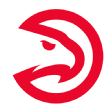
After years of rumors, the John Collins era for the Hawks ends with a whimper. This is essentially a salary dump to take Atlanta out of the luxury tax.
The Hawks were $9.6 million over the tax line with Collins and their four players with non-guaranteed 2023-24 salaries (Bruno Fernando, Vit Krejci, Tyrese Martin and Garrison Mathews), which was the product of Atlanta's improbable (but ultimately detrimental) run to the 2021 conference finals.
In the wake of Collins capably filling a role as a floor-spacing power forward during that playoff run, making 36% of his 3s and 63.5% of his 2s while defending on the perimeter, he re-signed on a five-year deal worth $125 million that the Hawks have been trying to move almost from the second the ink dried.
Part of the issue was Collins' rapid regression from 3-point range. He hit 40% in both the 2019-20 and 2020-21 regular seasons, necessary as Atlanta transitioned him to more of a stretch 4 with the arrival of Clint Capela as the primary partner for Trae Young in the pick-and-roll.
In 2019-20, Collins set 54 on-ball screens per 100 possessions, according to Second Spectrum tracking. The Hawks added Capela at that season's trade deadline, though he did not play for the team because of injury before play stopped due to the COVID-19 pandemic. That dropped to 39.0 in 2020-21 and 34.4 in 2021-22 before going off a cliff last season. Collins averaged just 19.4 ball screens per 100 possessions, down nearly two-thirds from his 2019-20 rate.
Simultaneously, Collins shot a career-low 29% from beyond the arc, tanking his efficiency and his trade value. He posted both the lowest usage rate (17%) and true shooting percentage (.593) of his NBA career. No wonder Atlanta found few takers.
Still, Collins started every game he played and averaged 30 minutes per game in the regular season and 27.3 in the playoffs, so the Hawks are taking an on-court hit. Coach Quin Snyder has a few options for replacing Collins. Jalen Johnson, who saw increased playing time after Snyder took over, would be the like-for-like choice: an athletic, 6-foot-9 forward with questionable shooting (28% from 3 in two NBA seasons).
Alternatively, the Hawks could go smaller and slide 6-8 De'Andre Hunter to the 4, opening a spot in the lineup for sixth man Bogdan Bogdanovic, Saddiq Bey or 2022 first-round pick AJ Griffin. Although he's the most proven player of the group, keeping Bogdanovic in a reserve role is probably ideal. That could set up a training camp competition between Bey, Griffin and Johnson.
Gay is unlikely to factor into that competition. He shot just 38% from the field and 25% from 3-point range last season. He'll turn 37 in August and no longer merits a rotation role. Gay, who must exercise his $6.5 million player option as part of this trade, will provide experience in Snyder's system.
Dealing Collins will allow Atlanta to add to the roster using the non-taxpayer midlevel exception. Depending on which non-guaranteed salaries they keep, the Hawks will have $10 million to $18 million available to fill out their roster and stay below the tax line. Atlanta will want to keep an eye on unlikely incentives in the contracts of Capela, Hunter and Dejounte Murray that could take the team into the tax.
No matter whom the Hawks add, that player is unlikely to be as productive on the court as Collins. That's the reality of building a team with a payroll in the luxury tax but not the results on the court to justify it. One of the regular themes of my trade analysis is that moves that look helpful when viewed strictly in terms of talent can be harmful financially because of the tough choices they force down the line. The Murray deal in particular had that effect here.
Grading this trade is largely a matter of perspective. Given the urgency to avoid the luxury tax in time to make moves in free agency and how Collins' value had sunk, getting out of the remaining three years of his contract without having to add draft picks could be seen as a positive outcome for Atlanta. Still, it's hard to feel good about how the Hawks' entire process resulted in discarding a productive player for little on-court return.
Jazz: B+

The Jazz will use cap space to take on Collins' much larger salary in exchange for Gay, a process that could require some work between now and then. Utah doesn't have enough cap space to add Collins and maintain cap holds for both Jordan Clarkson ($20 million) and Talen Horton-Tucker ($19.4 million).
Fortunately for the Jazz, there are a few ways to create the necessary space. One is Clarkson exercising his $14.3 million player option for 2023-24, which would allow Utah to offer him a contract extension off that deal rather than re-signing him in free agency. Alternatively, the Jazz could simply sign Clarkson and Horton-Tucker to deals starting at lower values than their cap holds, a likely scenario if both return. Lastly, Utah would have cap space left over if either Clarkson or Horton-Tucker signs elsewhere.
Spending their cap space in free agency wasn't a likely outcome for the Jazz, who are still early in the process of retooling their roster after trading away Rudy Gobert and Donovan Mitchell last summer. So Utah's alternative path was probably using space to take on less-desirable contracts while adding draft picks, a market in which it could have competition from the Indiana Pacers, the Oklahoma City Thunder, the San Antonio Spurs and possibly the Washington Wizards.
Instead, the Jazz are basically treating Collins as an addition via free agency on a three-year, $78.5 million deal -- albeit with the benefit of offloading Gay's $6.5 million salary this season.
Surely, part of the hope for Utah is that Collins' shooting slump was the product of a sprain to his right ring finger in March 2022, one that apparently hadn't healed by last summer. If another offseason allows Collins to get back to the kind of above-average shooting we saw prior to the injury, the value proposition becomes far different.
Either way, the Jazz will likely get Collins more of the pick-and-roll opportunities on which he once thrived. Most likely, he fits into Utah's starting lineup at power forward between Walker Kessler and Lauri Markkanen, the role Jarred Vanderbilt played prior to last season's trade deadline. Vanderbilt, a less effective 'roll man, still saw greater volume of them (25.6 per 100 possessions) than Collins did in Atlanta.
More than anything, I'm optimistic about Jazz coach Will Hardy playing to Collins' strengths, something he was able to do with what seemed like a misfit roster last season. Not that Snyder isn't capable of doing the same, but he had to worry about building around Atlanta's backcourt strength and winning games right now in a way that isn't as pressing a concern as development in Utah.
Given how long he has been involved in trade rumors, it's easy to forget that Collins won't turn 26 until September. His current contract takes him through what should be his prime. Because of Collins' dependence on his athleticism, he could age more quickly than the typical NBA player. That still shouldn't be an issue on this deal.

DRAFT-NIGHT DEALS
June 22: Mavericks turn 10th pick into a haul
Dallas Mavericks get:
C Richaun Holmes
No. 12 pick (Dereck Lively II)
No. 24 pick (Olivier-Maxence Prosper)
Oklahoma City Thunder get:
No. 10 pick (Cason Wallace)
F Davis Bertans
Sacramento Kings get:
Trade exception
Kings: B
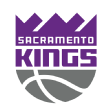 The most fascinating move of draft night was made by the Kings, who gave up the 24th pick in order to shed Holmes' $12 million salary. Between Holmes and the pick, Sacramento created $13-plus million in additional cap space this summer, bringing them to a possible max of $38 million.
The most fascinating move of draft night was made by the Kings, who gave up the 24th pick in order to shed Holmes' $12 million salary. Between Holmes and the pick, Sacramento created $13-plus million in additional cap space this summer, bringing them to a possible max of $38 million.
Several other teams will have more space than the Kings, who realistically are probably looking at $36 million in cap space after factoring in the modest cap hold for forward Trey Lyles ($3.4 million). Yet none of them had home court advantage in the first round of last year's playoffs, putting Sacramento in position to add to a young core led by De'Aaron Fox, Domantas Sabonis and 2022 No. 4 pick Keegan Murray.
Creating that much space would require renouncing the rights to Harrison Barnes, meaning the Kings would almost certainly be shopping for a replacement forward. Jerami Grant would fit the bill, as would Khris Middleton or possibly Dillon Brooks.
By far the most intriguing possibility, however, is Sacramento making a run at bringing unrestricted free agent Draymond Green up I-80 from the Bay Area. Defensively, Green would be a massive upgrade for a team that ranked 24th on a per-possession basis last season. Fitting Green with Sabonis, another non-floor spacer, would be a challenge mitigated in part by the fact that both players are terrific playmakers.
There are other options for Sacramento. The Kings could re-sign Barnes and make a more modest addition while reserving some cap space to renegotiate Sabonis' 2023-24 salary upward, making a contract extension for the All-NBA pick more realistic. Sacramento could also look to take back a salary into space.
Still, none of those options seem worth giving up a first-round pick to facilitate. This deal suggests the Kings have more in store, which makes this grade really more of a TBD.
Mavericks: A-
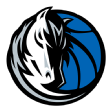 This trade unfolded in two parts on draft night. First, we learned the Mavericks were sending the 10th pick and Bertans to the Thunder for the 12th pick, a solid piece of business -- they still landed LiveIy, surely their target all along, after trading down -- that felt incomplete because of the ability to match Bertans' salary coming back.
This trade unfolded in two parts on draft night. First, we learned the Mavericks were sending the 10th pick and Bertans to the Thunder for the 12th pick, a solid piece of business -- they still landed LiveIy, surely their target all along, after trading down -- that felt incomplete because of the ability to match Bertans' salary coming back.
A few hours later, we got the second part of the deal with Dallas taking on Holmes' salary from the Kings and landing the No. 24 pick in the process. So if you're scoring at home, the Mavericks swapped Bertans and No. 10 for Holmes and the 12th and 24 picks.
In that exchange, Dallas saved money next season and can reasonably hope to have upgraded the roster. Assuming Holmes doesn't waive a 15% trade bonus, he will make about $3 million less than Bertans in 2023-24. The Mavericks are surely hoping to get the version of Holmes that averaged 14.2 PPG, 8.3 RPG and 1.6 BPG as a full-time starter for Sacramento in 2020-21.
That performance made Holmes one of the most coveted big men on the market in free agency, which earned him a four-year, $46.5 million contract. Months later, the Kings undermined the value of that deal by trading for Sabonis, relegating Holmes to a reserve role. He was ineffective last season, posting a career-low 13.4 points, 1.1 blocks and just 8.3 rebounds per 36 minutes and losing his rotation spot behind Sabonis.
Given Holmes won't turn 30 until October, age isn't really an explanation for his poor play. If frustration with his playing time was behind his downturn, Dallas may be able to get more out of him than Sacramento did. The Mavericks can offer Holmes a chance to compete with Lively for the starting job at center.
If not, Dallas added a pair of first-rounders and more importantly their rookie contracts to the books. 2020 first-round pick Josh Green had been the Mavericks' only player on a rookie deal. Dallas also improved its chances of ducking the luxury tax next season with unrestricted free agent Kyrie Irving on a new contract and possibly having access to the non-taxpayer midlevel exception this summer, depending where Irving's salary comes in.
The slight downside is potentially paying more in 2024-25, when just $5 million of Bertans' salary was guaranteed. Holmes holds a $12.9 million player option for that season. That sacrifice is worth it to add a first-round pick and see if Holmes can turn things around.
Thunder: C
 This deal continues a trend of the Thunder moving up in the first round to try to make sure they get their guy. Last year, Oklahoma City paid heavily to go up two picks and take Ousmane Dieng at No. 11. This time, the Thunder made an almost identical move up from No. 12 to No. 10.
This deal continues a trend of the Thunder moving up in the first round to try to make sure they get their guy. Last year, Oklahoma City paid heavily to go up two picks and take Ousmane Dieng at No. 11. This time, the Thunder made an almost identical move up from No. 12 to No. 10.
Instead of dipping into a stockpile of incoming future first-round picks, this time Oklahoma City is taking advantage of what could have been $36 million in cap space this summer to add Bertans' $17 million salary. It's possible the Thunder could pump up Bertans' trade value by playing him as a floor spacer in the role Mike Muscala has filled for Oklahoma City in the past. More likely, that's a sunk cost for moving up two spots.
If so, this again looks like an overpay by the Thunder in the draft. Moving up from No. 12 to No. 10 is worth the equivalent of the 42nd pick by my trade value chart, which is a paltry return for taking back Bertans' salary. Of course, the value is less meaningful if Wallace works out for Oklahoma City.
I had Wallace rated as the No. 6 prospect in my stats-based projections, which did not include the Thompson twins. If you consider this a trade up to get the eighth-best prospect rather than the 10th pick, the value is more reasonable.
June 22: Wizards deal for the No. 7 pick
Washington Wizards get:
No. 7 overall pick (G/F Bilal Coulibaly)
Indiana Pacers get:
No. 8 overall pick (F Jarace Walker)
2028 second-round pick (via Phoenix)
2028 second-round pick (via Washington)
Washington: B-
 A team trading up one pick is typically a sign they fear another team will move into that spot instead and pick the player they want -- in this case, late-rising French forward Coulibaly. Setting aside the merit in taking Coulibaly that high, the cost wasn't substantial. The Wizards just added a massive cache of second-round picks as part of the as-yet-unofficial Bradley Beal trade and could afford to part with a few of them to make sure they got their guy.
A team trading up one pick is typically a sign they fear another team will move into that spot instead and pick the player they want -- in this case, late-rising French forward Coulibaly. Setting aside the merit in taking Coulibaly that high, the cost wasn't substantial. The Wizards just added a massive cache of second-round picks as part of the as-yet-unofficial Bradley Beal trade and could afford to part with a few of them to make sure they got their guy.
Indiana: A
 This trade was a modest but positive case of the Pacers working the margins on draft night. Knowing Washington had little interest in the power forwards, Indiana's targeting allowed the team to collect a pair of distant second-round picks while still getting top target Walker at the No. 8 pick.
This trade was a modest but positive case of the Pacers working the margins on draft night. Knowing Washington had little interest in the power forwards, Indiana's targeting allowed the team to collect a pair of distant second-round picks while still getting top target Walker at the No. 8 pick.

PRE-DRAFT DEALS
June 22: The Point God joins the Splash Brothers
Golden State Warriors get:
G Chris Paul
Washington Wizards get:
G Jordan Poole
2030 first-round pick (top-20 protected)
2027 second-round pick
Warriors: B+
 It would be nice to have truth serum to ask new Warriors GM Mike Dunleavy Jr. and the rest of the team's front office two questions:
It would be nice to have truth serum to ask new Warriors GM Mike Dunleavy Jr. and the rest of the team's front office two questions:
How much is this trade about shedding Poole's long-term contract?
To what degree is Golden State hoping to improve its 2024 title chances?
On the court, Paul addresses the Warriors' biggest weakness: their tendency to crater offensively any time two-time MVP Stephen Curry is on the bench. Golden State scored 110.4 points per 100 possessions last season without Curry, a rate that would have ranked among the NBA's bottom five teams. In the playoffs, their offensive rating without Curry dropped to an unthinkable 89.4, according to NBA Advanced Stats.
Remarkably, this is a trend that existed even when the Warriors had a second MVP (Kevin Durant) to anchor their second units. But Golden State has never had another ball handler like Paul, even the 38-year-old version. If Warriors coach Steve Kerr is willing to lean more heavily into pick-and-roll basketball than he prefers, a lineup with Paul and floor spacers could produce adequate results with Curry resting or unavailable.
The most interesting question from a basketball standpoint is how much Paul might play with Curry. That was a big part of Poole's role in Golden State, as more than 60% of Poole's minutes in the playoffs came alongside Curry. Curry-Paul backcourts would run even smaller, and Paul is no longer the spot-up threat from the perimeter that Poole is.
Paul shot a remarkable 51% on catch-and-shoot 3s during the 2022-23 regular season, per Second Spectrum tracking, but attempted just 2.4 per 100 possessions. Poole's rate was more than 2.5 times higher at 6.6 attempts per 100 possessions.
Additionally, the Warriors may look at a smaller role as a way to keep Paul healthy for the playoffs. He still averaged 32 MPG last season, albeit in his fewest games (59) since 2018-19. Paul has never in his career played fewer than 31.4 MPG, and assuming he buys into a plan to manage his minutes, lower totals could help keep him fresh.
This analysis all assumes Golden State keeps Paul the entire season. Depending on ownership's appetite for paying the repeater tax and risking second-apron sanctions that kick in with the new collective bargaining agreement, the Warriors have multiple options with Paul.
In the short term, this move is unlikely to lessen Golden State's tax bill. Enough of Paul's $30.8 million salary will have to be guaranteed that waiving him after the trade makes little sense, even with the possibility of using the stretch provision to spread that guaranteed salary over five years. But the Warriors could keep Paul for a year and then get out of his contract with nothing guaranteed for 2024-25, creating major tax savings that season.
Alternatively, Golden State could look at Paul as similar to D'Angelo Russell when he was acquired in a sign-and-trade deal for Durant -- the player who ultimately gets you the player you want via trade. (In Russell's case, that was Andrew Wiggins plus the draft pick that became Jonathan Kuminga.) The Warriors could trade Paul as an expiring salary either before this year's deadline or next summer, if they guarantee part or all of his contract.
No matter how Golden State ends up using Paul, the decision to trade the 24-year-old Poole for a 38-year-old guard while giving up draft picks in the trade reflects significant regret about the extension Poole signed in October.
After playing a breakthrough role in the Warriors' 2021-22 title run, Poole backslid last year. He ramped up his usage rate to 29% but saw his true shooting percentage fall from .598 to .573, slightly worse than league average. Poole was notably ineffective in the playoffs, making just 42% of his 2-point attempts and 25% of his 3s, causing his role to shrink. He saw more than 24 minutes of action just once as Golden State lost to the Los Angeles Lakers in the conference semifinals.
Beyond Poole's play, the financial reality changed for the Warriors between October and now. Although the possibility of the league targeting Golden State's spending in the new CBA was evident, it was unclear just how draconian those restrictions would be.
At some point, the Warriors were probably going to be forced to choose between keeping Poole and retaining core starters Draymond Green (an unrestricted free agent this summer after declining a $27.6 million player option for 2023-24) and Klay Thompson (entering the final season of his contract).
Golden State has always been reluctant to part with first-round picks. The Warriors had dealt only one since winning their first title in 2015. Their willingness to break with tradition, albeit with significant protections -- ESPN's Zach Lowe reported the pick is top-20 protected, and by definition it cannot roll over to the following draft -- suggests both an urgency to maximize the remainder of Curry's prime and an awareness of coming financial restraints.
Wizards: C+
 It has been easy for fans to look at the Wizards' trades this week -- they've dealt Bradley Beal, Kristaps Porzingis and now Paul, acquired as part of the return for Beal from the Phoenix Suns -- and question the value Washington has gotten. Yet Beal and Porzingis weren't helping the Wizards contend now, and moving them offered Washington cap flexibility if not necessarily a massive draft haul. They were solid, incremental trades.
It has been easy for fans to look at the Wizards' trades this week -- they've dealt Bradley Beal, Kristaps Porzingis and now Paul, acquired as part of the return for Beal from the Phoenix Suns -- and question the value Washington has gotten. Yet Beal and Porzingis weren't helping the Wizards contend now, and moving them offered Washington cap flexibility if not necessarily a massive draft haul. They were solid, incremental trades.
Adding Poole, by contrast, is a much bigger risk. Yes, on paper the Wizards have finally gotten the first-round pick the Beal and Porzingis trades didn't yield. Top-20 protection for a single year, however, means Washington may never see this first-rounder, and it's got almost no upside. So Poole is the biggest thing the Wizards are getting out of this deal.
A year ago, that would have looked like a coup. Poole was considered in the same tier of young guard as Tyler Herro of the Miami Heat, who signed a virtually identical extension (Poole is guaranteed $125 million over four years to Herro's $120 million, in addition to incentives neither is likely to reach). Back then, Poole had seemingly proven himself in the crucible of playoff competition en route to the title -- and with plenty of room to grow.
Now, it's fair to wonder whether 2021-22 represented a high-water mark for Poole. He shot 36% from 3-point range that season but has hit just 34% overall in his career, right near last year's mark. Without average or better 3-point shooting, it becomes more difficult for Poole to score efficiently. Turnovers have also been an issue for Poole, whose 3.1 giveaways per game ranked 13th highest in the league. Of the top 25 players in turnovers per game, only Russell Westbrook averaged fewer minutes than Poole.
At the same time, it's unclear just how much the preseason altercation that saw Poole take a punch from Green during practice affected his season. Washington will be a fresh start for Poole, who could emerge as the Wizards' go-to scorer depending how the rest of the roster takes shape. Poole might have positive trade value as the salary cap increases going forward and he enters his prime.
Washington has more moves to make. Dealing Paul for Poole doesn't help solve a backcourt logjam that also includes newcomer Tyus Jones, incumbent starting point guard Monte Morris and backups Landry Shamet and Delon Wright. It's still possible the Wizards add to that mix by drafting a guard in the lottery Thursday night.

June 21: Celtics add Porzingis, send Smart to Memphis in three-team deal
Boston Celtics get:
F/C Kristaps Porzingis
2023 first-round pick (No. 25)
2024 first-round pick (via Golden State; top-four protected)
Washington Wizards get:
G Tyus Jones
F Danilo Gallinari
C Mike Muscala
2023 second-round pick (No. 35)
Memphis Grizzlies get:
G Marcus Smart
Celtics: B-
 In many ways, adding Porzingis makes sense for Boston. Al Horford has been an important anchor for the Celtics, who must ramp down his minutes in his late 30s (Horford turned 37 in June). Horford's 30.5 MPG last season were actually his highest average since 2017-18, albeit in just 63 games as Boston planned nights off for him any time the team played a back-to-back.
In many ways, adding Porzingis makes sense for Boston. Al Horford has been an important anchor for the Celtics, who must ramp down his minutes in his late 30s (Horford turned 37 in June). Horford's 30.5 MPG last season were actually his highest average since 2017-18, albeit in just 63 games as Boston planned nights off for him any time the team played a back-to-back.
Given Robert Williams III's history of knee injuries, the Celtics can't count on him sopping up all of those minutes, and he's a different type of player anyway. Porzingis gives Boston the shooting and positional versatility Horford offers, allowing him to play alongside either Celtics frontcourt incumbent as either the power forward or the center.
At the same time, Porzingis is also a very different player from Horford in key ways. Much of Horford's defensive value to Boston has been his ability to switch onto ball handlers in pick-and-roll. That's something Porzingis isn't as comfortable doing. Per Second Spectrum tracking, he switched on just 5% of the ball screens he defended last season, as compared to 28% for Horford during the regular season.
In fact, no Celtics regular switched as infrequently when defending the screener on ball screens as Porzingis. Backup center Luke Kornet was the closest, doing so 7% of the time. Boston's coaching staff will likely have to alter the defensive scheme somewhat to keep Porzingis closer to the basket and defending bigger opponents rather than guards.
On the other end, Porzingis doesn't bring the ball movement that Horford does. Last season's 3.0 assists per 36 minutes were a career high for Porzingis. Horford has topped that every year since 2013-14.
The upside is that Porzingis offers the Celtics far more shot creation, which could help him anchor second-unit lineups with either Jaylen Brown or Jayson Tatum on the bench. Porzingis posted a 54% effective field goal percentage (eFG%) on shots with at least two seconds of touch time, per data from NBA Advanced Stats.
Porzingis post-ups will be a new option for the Celtics. No Boston player posted up more than 100 times last season, according to Second Spectrum data, with Jayson Tatum's 95 post-ups leading the team. Porzingis had 263 with the Wizards, while his 1.25 points per direct post-up -- situations where he either shot, turned the ball over or passed to a teammate who shot -- ranked fourth among all players with at least 100 post-ups.
Particularly when Porzingis plays in five-out lineups alongside Horford or another floor spacer, posting him up could be a way for the Celtics to generate easy opportunities and avoid the kind of late-game scoring lulls that plagued them in close games.
The biggest question mark of this move is whether Porzingis will merit being on the court to close games next season. Joe Mazzulla and his coaching staff already have plenty of options. Brown and Tatum are givens, while Derrick White belongs in that category as well. Horford's versatile defense makes him a better choice than Porzingis most nights, meaning Mazzulla might have to choose between Porzingis, Malcolm Brogdon and Robert Williams for the fifth spot.
Just when we had wrapped our heads around the idea of Porzingis in Boston, the deal changed dramatically with the LA Clippers pulling out of a reported three-team construction that would have landed LA Brogdon. Instead, the Celtics are sending out Smart, their longest-tenured player and starting point guard for all 41 games he has played over the past two postseasons.
By trading Smart, Boston will replenish its stockpile of first-round picks, depleted in past trades for Brogdon, Horford and White. The Celtics swap up from No. 35 to No. 25 in Thursday's draft as part of this deal and also add a lightly protected 2024 first-rounder from the Golden State Warriors, a pick that could land in the middle of the round if the Warriors struggle through an injury-plagued regular season as they did in 2022-23.
Those picks will either help Boston add lower-cost contributors as the team's core gets more expensive with Brown up for an extension and Tatum already eligible to sign a supermax contract next summer, or replenish the Celtics' trade coffers.
Still, it's tough to envision Boston without Smart, the first building block of the current Celtics back in Brad Stevens' second season as head coach. Smart's energy and toughness have set the tone for Boston, culminating in 2021-22 as he became the first guard since Gary Payton to win Defensive Player of the Year.
Smart's defense didn't seem to have the same impact last season, when White beat him for an All-Defensive nod. I can't help but wonder if the Celtics were OK moving Smart at the peak of his value before age starts to take a toll. Smart will turn 30 next March and plays a demanding, physical style. Although he has improved as a shooter, Smart isn't good enough to entirely fall back on that if his physical ability wanes.
At the same time, Boston is trying to win a championship right now. Barring further moves, trading Smart is a big gamble on either Brogdon being the primary point guard -- knowing he was nearly dealt by the Celtics -- or their ability to succeed with a bigger perimeter group of Brown, Tatum and White that lacks a traditional point guard.
Going forward, the Celtics have more questions to answer. One of those is a possible extension for Porzingis, who could add two years and up to $77 million to his deal within six months of the trade, according to ESPN's Bobby Marks. Realistically, Porzingis is probably looking at a slight cut in his salary going forward, which would help Boston manage its tax bill.
Heading into free agency, we'll see whether this move changes Boston's approach to re-signing forward Grant Williams in restricted free agency. Adding Porzingis makes Williams the Celtics' fourth big man, and he was already on the fringes of the rotation late last season and into the playoffs. Given the tax multiplier on his salary, Williams might prove to be a luxury Boston can do without.
Lastly, dealing Smart surely affects Payton Pritchard's future with the Celtics. Pritchard presumably slides into a larger role on the perimeter off the bench, and Boston might now be inclined to consider extending Pritchard at a reasonable rate heading into the last season of his rookie contract.
Overall, I like the Celtics' chances of winning the 2024 title a little less than I did at the start of the day Wednesday, and perhaps more so compared to the original three-team trade construction. But I can't wait to see how it plays out on the court -- and what else Boston has in store.
Grizzlies: B
 Perhaps inevitably, my feelings about the Grizzlies' end of this deal are the inverse of what I think for the Celtics. I love the fit of Smart in Memphis but have concerns about the value the Grizzlies gave up.
Perhaps inevitably, my feelings about the Grizzlies' end of this deal are the inverse of what I think for the Celtics. I love the fit of Smart in Memphis but have concerns about the value the Grizzlies gave up.
Let's start with the on-court element. If Jones was ready to move on for a larger role, as ESPN's Tim MacMahon mentioned as a possibility, adding a proven point guard capable of starting the 25 games Ja Morant will miss due to NBA suspension was an important need for Memphis.
At the same time, the Grizzlies couldn't invest too heavily in a player incapable of pairing with Morant in the backcourt. Given his background playing both on and off the ball, Smart looks ideal. Once Morant returns, Smart could start on the wing alongside Desmond Bane and slide to point guard when Morant rests.
A Morant-Bane-Smart perimeter trio is small on paper, with none of those players listed taller than 6-foot-5. However, both Bane and Smart can guard up because of their strength. Like predecessor Dillon Brooks, Smart is capable of guarding the opponent's best scorer at multiple positions, possibly up to and including power forwards.
Unlike Brooks, Smart has generally proven capable of toeing the line between instigating and harming his own team with his aggression. That includes shot selection. Although Smart is no more accurate a shooter than Brooks over the course of his career, his true shooting percentage (.540 since 2018-19) has been dramatically better than Brooks' .512 career mark over the same span. No team has managed to successfully help off Smart in the playoffs as the Los Angeles Lakers did with Brooks in last season's first round.
Even with a $1 million trade bonus applied to his remaining contract, Smart is on a favorable deal that pays him an average of $20 million over the next three seasons. Memphis will have a difficult decision to make on Luke Kennard's $14.7 million team option for 2024-25, but it should be able to skirt the luxury tax if necessary despite adding long-term salary for an expiring contract in Jones.
The downside is the Grizzlies, long flush with draft picks from their rebuilding process, no longer have any extras coming and are down one of their own. I can understand Memphis not wanting to add another rookie to a crowded roster -- if the Grizzlies exercise Xavier Tillman's team option, they'll have 14 players under contract for 2023-24 -- but that Golden State pick was a useful trade chip.
At 29, Smart isn't exactly the ideal fit timeline-wise for Memphis' core of young talent. He'll be tapering down at the time Morant and Jaren Jackson Jr. (who both turn 24 this summer) reach their apex. Yet the Grizzlies have surely been trying to add a premier, young 3-and-D wing with no success thus far. Their desire to close the deal now for Smart is understandable.
Wizards: A-
 If Porzingis was going to exercise his $36 million player option for 2023-24, a trade was an inevitable outcome as part of what is evidently a Wizards rebuild. Although Washington could have waited to move Porzingis at the deadline as a rental, grabbing value now was assuredly the right move given his injury history and the team's desire to generate a high draft pick next June.
If Porzingis was going to exercise his $36 million player option for 2023-24, a trade was an inevitable outcome as part of what is evidently a Wizards rebuild. Although Washington could have waited to move Porzingis at the deadline as a rental, grabbing value now was assuredly the right move given his injury history and the team's desire to generate a high draft pick next June.
Despite the fact that the Wizards didn't come out of this version of the trade with a first-round pick, I still like it better than the original construction with the Clippers. The line of demarcation between picks late in the first and early in the second rounds is marginal, so ending up with the No. 35 pick from Boston instead of the 30th pick isn't a substantial downgrade. Meanwhile, Washington ends up with a much better centerpiece in return than Marcus Morris Sr.
Jones was linked heavily to the Wizards as a free agent when they were searching for a starting point guard last summer. After returning to Memphis on a two-year deal, Jones outplayed Monte Morris, the point guard Washington did manage to add.
Given the likelihood of the Wizards focusing on developing young talent, Jones might now be most important as a trade chip. Finding a team in need of a starting point guard is a tricky proposition right now, but given a reasonable contract, Washington should be able to find a taker by the 2024 trade deadline to add additional draft capital.
To match Porzingis' salary, the Wizards have to take back Gallinari and Muscala, with the Celtics apparently set to pick up the latter's $3.5 million team option. This might depend on how crowded the Washington roster eventually becomes, but it seems possible we'll never see either player in a Washington uniform.
June 18: A new big three forms in Phoenix
Phoenix Suns get:
Bradley Beal
Washington Wizards get:
Chris Paul
Landry Shamet
Multiple second-round picks
Multiple pick swaps
Suns: D
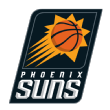
Will adding Beal help the Suns even things up with the defending champion Denver Nuggets after losing to them in the 2023 conference semifinals?
After years of speculation about Beal's possible departure from the Wizards, a deal came together swiftly in the days after ESPN's Adrian Wojnarowski reported Wednesday that the Wizards' front office would work together with Beal and his agent to find a new home for the longtime Washington All-Star.
So what kind of player is Beal at this stage of his career, two years removed from averaging 31.3 PPG and battling Stephen Curry for the scoring title until the last day of the season? Since then, Beal hasn't even so much as made the All-Star team, averaging 23.2 PPG while playing a combined 90 games.
The encouraging news is that Beal was about as efficient as ever last season, posting a .593 true shooting percentage that matched his mark from 2020-21. Unlike 2021-22, when Beal shot a career-low 30% from 3-point range, last year's scoring drop was a function of playing fewer minutes (33.5, his fewest since overcoming stress injuries in his right lower leg that limited his availability early in his career) and a 29% usage rate that was Beal's lowest since 2018-19.
Playing alongside Devin Booker and Kevin Durant, Beal won't need to maintain the massive usage rates -- in the 34% range -- he posted in 2019-20 and 2020-21, the highest-scoring seasons of his career. And compared with many high-scoring stars, Beal is better positioned to maintain his value without the ball in his hands as frequently.
According to data from NBA Advanced Stats, Beal posted a 52% effective field goal percentage on shots with at least two seconds of touch time beforehand, which can broadly be thought of as self-created attempts. That jumped to 61% on attempts with less touch time than two seconds.
Relative to the average NBA player, Beal's ability to create his own shot is more impressive. (League average eFG% was 50% on self-created shots and 59% on all other attempts.) But in an absolute sense, moving to a situation where more of his shots are created by others will make Beal more efficient. That ratio had probably skewed too far toward self-creation in Washington, where 68% of Beal's shots were self-created.
In particular, the biggest shift in Beal's game has been the percentage of his 3-point attempts coming off the dribble. Playing with John Wall early in his career, Beal feasted on a steady diet of catch-and-shoot 3s, peaking at 395 such attempts in 2016-17 at a 41.5% clip according to Second Spectrum tracking. Those represented 71% of Beal's total 3-pointers. Last season, per Second Spectrum, barely half of Beal's 3-point tries were catch-and-shoots.
After a dreadful 2020-21 performance on catch-and-shoot 3s (29%, his lowest in the tracking era, which dates back to Beal's second NBA season), he bounced back to hit 40% last season, according to Second Spectrum tracking. That skill, including Beal's ability to be a threat coming off screens, is why teams have long coveted him as a complementary star.
The challenge of fitting Beal in is that he's being paid like a top-tier superstar rather than a complementary one. Based on the current projection for the 2023-24 salary cap, Beal's salary will come in as the NBA's fifth-largest, trailing only Curry and three players who will make next season's max on extensions that kick in (Joel Embiid, LeBron James and Nikola Jokic).
That salary has been an impediment for the Wizards building a winner around Beal, and although Phoenix doesn't have to worry about adding star talent, filling out the rest of the roster will be a challenge.
Worse yet, Beal is early in the five-year contract he signed with Washington less than a year ago. His salary increases to $57 million in 2026-27 (a player option), when Beal will be 33. An escalating salary cap will likely grow faster than Beal's contract, but not enough to offset age-related decline. That's why the return the Wizards got in terms of picks and players isn't commensurate with Beal's reputation as a player.
More so than whether Beal was the right star to pursue to go with Booker and Durant, the question for the Suns is whether adding a star was the right move as opposed to trying to use Paul's contract to beef up their depth with multiple contributors.
In Booker and Durant, Phoenix already has two of the league's best individual scorers. Yes, we saw against the Nuggets how a committed, effective defense could slow down Durant, who averaged 29.5 PPG in the series but shot just 45% from the field and 22% from 3-point range.
Still, the Suns' larger issue was their lack of two-way role players, which forced them to tilt heavily toward weaker defenders to space the floor well enough for Booker and Durant to operate -- allowing Denver to feast offensively.
Beal can be that kind of player. When motivated, he's been a quality individual defender on the perimeter. Still, his addition makes Phoenix small on the wing with a pair of natural shooting guards listed at 6-foot-4 (Beal) and 6-5 (Booker) -- unless the Suns plan to use Booker at point guard, taxing him with more offensive responsibilities but putting more size on the court.
Moreover, Phoenix again traded multiple contributors for a single player. The quartet of Beal, Booker, Durant and center Deandre Ayton will combine to make $163 million in 2023-24, enough to already put the Suns into the luxury tax without signing even a fifth player to make a full lineup.
As a result, without an Ayton trade, the Suns assuredly won't have access to their taxpayer midlevel exception because of incoming rules restricting teams that exceed the second luxury tax apron. Phoenix could still re-sign its own free agents, most notably forward Torrey Craig, but any outside additions to the roster will likely be limited to players making the veteran's minimum.
There's a path to the Suns filling out the roster by taking advantage of veterans' desire to pursue a championship in an attractive, warm-weather market. But we don't have to look back further than the 2021-22 Los Angeles Lakers to see the potential pitfalls in trying to build a roster this way.
Given how much time all three of Phoenix's All-Stars have missed to injury -- they combined to play 61% of possible games last season -- it's plausible the Suns could find themselves battling just to avoid the play-in next spring.
The problem will only get worse in future seasons, when Phoenix will be limited by the second apron in terms of adding through the draft and free agency while Beal and Durant (35 by the start of next season) age. Perhaps a satisfying Ayton trade will emerge that both enhances the Suns' depth and takes them out of second-apron purgatory, but that's an enormous risk to willingly take -- using much of Phoenix's minuscule remaining draft capital in the process.
The Durant trade seemed like a reasonable gamble to take at the time, given its championship upside. Adding Beal to the mix after an early playoff exit, by contrast, feels more like doubling down on a hand that was already losing.
Wizards: B-

The urgency for the Wizards to make a move now, while Beal was inclined to waive his no-trade clause, is clear. Washington let Beal go for less than what it could have dreamed of getting a few years ago so it could avoid his trade value dropping further over time as he ages and teams reckon with the impact of the second tax apron.
Already, the market for Beal seems to have been impacted by the possibility of Damian Lillard coming available later this summer, depending on what the Portland Trail Blazers do with the No. 3 pick. That might have limited how far the Miami Heat were willing to go in pursuit of Beal. As a result, Washington came out of this trade without a single first-round pick, although swaps in the distant future could have value if the Suns implode due to age.
The biggest question here, then, is whether the Wizards would have been better off waiting to see if the Blazers can swing a deal for a veteran who might have ensured Lillard's happiness with Portland's roster. In that scenario, Washington might have been able to leverage a deal heavier on draft picks out of Miami.
It will be interesting to see how the Wizards handle Paul. Paul's $30.8 million salary for 2023-24, of which only $15.8 million was previously guaranteed, will likely become fully guaranteed for this trade, sources told ESPN's Brian Windhorst. If Kristaps Porzingis exercises his $36 million player option, Washington won't have cap space this year, meaning a Paul buyout doesn't carry much benefit. The team would surely instead prefer to flip Paul elsewhere for a similar salary and modest draft compensation.
As for Shamet, despite having three years left on the extension he signed ahead of the 2021-22 season, he's functionally an expiring contract. Shamet's 2024-25 and 2025-26 salaries are non-guaranteed, meaning the Wizards can come out of this trade without any salary on their books beyond next season.
Depending how Washington handles Porzingis and Kyle Kuzma -- with the latter all but certain to decline a $13 million player option in favor of free agency -- it's possible Daniel Gafford's $13.4 million salary will be the largest for the Wizards in 2024-25. That will give Washington the ability to use cap space next summer to take on unwanted contracts from other teams in exchange for draft compensation.
Perhaps the most important thing the Wizards get out of this deal is clarity about the team's direction. After years of trying to make the playoffs with little upside beyond losing in the first round, Washington has finally acknowledged reality with the arrival of a new front office led by team president Michael Winger.
Rebuilding offers no guarantees for the Wizards, but it allows them to aspire for something more than 45 wins and a competitive first-round exit.

June 21: Pacers join Nuggets-Thunder draft pick swap
Oklahoma City Thunder get:
2029 first-round pick
Denver Nuggets get:
2023 first-round pick (No. 29)
2023 second-round pick (No. 32)
2023 second-round pick (No. 37)
2024 second-round pick
Indiana Pacers get:
2023 second-round pick (No. 40)
2024 first-round pick
Nuggets: A-

For the Nuggets, this is a two-part deal that will ultimately work together when completed. First, Denver grabbed the No. 37 pick in this year's second-round, along with first-rounders and second-rounders in 2024, from the Thunder in exchange for their own first-round pick as early as 2029.
Next, the Nuggets flipped the 2024 first-rounder and the No. 40 pick they already owned in this year's second round to the Indiana Pacers for a pair of higher picks. That leaves Denver with No. 29, No. 32 and No. 37 this year along with an extra 2024 second-rounder.
The core of this Denver team was built through the draft. The Nuggets' three leading scorers (Jokic, Murray and Michael Porter Jr.) were drafted and developed, as was key reserve Christian Braun. A fourth starter, Kentavious Caldwell-Pope, was acquired in exchange for another Denver draft steal (Monte Morris, the No. 51 pick in 2017).
With incoming restrictions on taxpaying teams in the new collective bargaining agreement potentially making it impossible for the Nuggets to use their taxpayer midlevel exception, which yielded sixth man Bruce Brown last summer, developing contributors from within will become even more paramount in Denver.
Already, the Nuggets have Braun and last year's No. 30 pick, Peyton Watson, in the pipeline. They'll have the opportunity to add three prospects this year to the mix, which will also help mitigate their tax bill with several modest rookie salaries filling out the bench.
In exchange, Denver is sacrificing upside and flexibility with future deals. The highest pick the Nuggets landed here is No. 29. The 2029 first-rounder Denver sent to Oklahoma City will almost certainly be higher.
Additionally, the first-round picks the Nuggets already owe to the Orlando Magic starting in 2025 and the Thunder starting in 2027 (both top-five protected) mean Denver won't be able to trade a future first-rounder until after the 2024 draft. So the Nuggets won't be able to use first-round picks to upgrade their core.
As long as Denver's core stays healthy, that risk seems reasonable. Jokic is perhaps the most likely superstar in the league to still be with his team in 2029, limiting the Nuggets' downside potential. Continuing to add low-cost contributors like Braun to the bench is the best way for Denver to maximize its championship window. This deal gives the Nuggets multiple shots at finding them.
Thunder: B

Much like last year's pre-draft deal between these two teams, which saw the Thunder send out the No. 30 pick used on Watson in exchange for a Denver first-round pick and taking back the salary of JaMychal Green, this one looks like a win-win.
For Oklahoma City, pushing picks into the future makes sense. Although the Thunder won't likely collect all four first-rounders they could have had next year, they are guaranteed at least two and have a strong chance to get the top-four protected pick from Houston.
Adding so many young players to an already youthful roster wouldn't make sense for Oklahoma City, and the Thunder will likely have more use for rookie contracts in 2029 or 2030, when their current young stars will be getting more expensive.
Just how good this deal is for Oklahoma City will depend in part on the protections on the first-round pick. It's a reasonable assumption that they will be similar to the 2027 pick the Thunder got from the Nuggets, which is top-five protected each year. One key difference is Oklahoma City will have at most a two-year window to collect the pick, whereas the 2027 pick could roll over all the way to 2029.
Pacers: B+

Although the Pacers don't have the stockpile of future first-rounders the Thunder do, they faced a bit of a draft pick crunch this year. Thanks to extra picks from the Cleveland Cavaliers (No. 26) and Boston Celtics (No. 29), Indiana started out with four of the top 32 picks in the draft, plus a fifth pick late in the second round (No. 55).
Adding five rookies to an already young roster wasn't ideal. By waiting a year, they should be able to move their first-round pick higher in the 20s at the cost of sliding back eight picks in this year's second round. My draft pick trade value chart suggests Indiana would need to get something better than the 2024 No. 26 pick in order to come out ahead in terms of total pick value. That seems likely to happen.